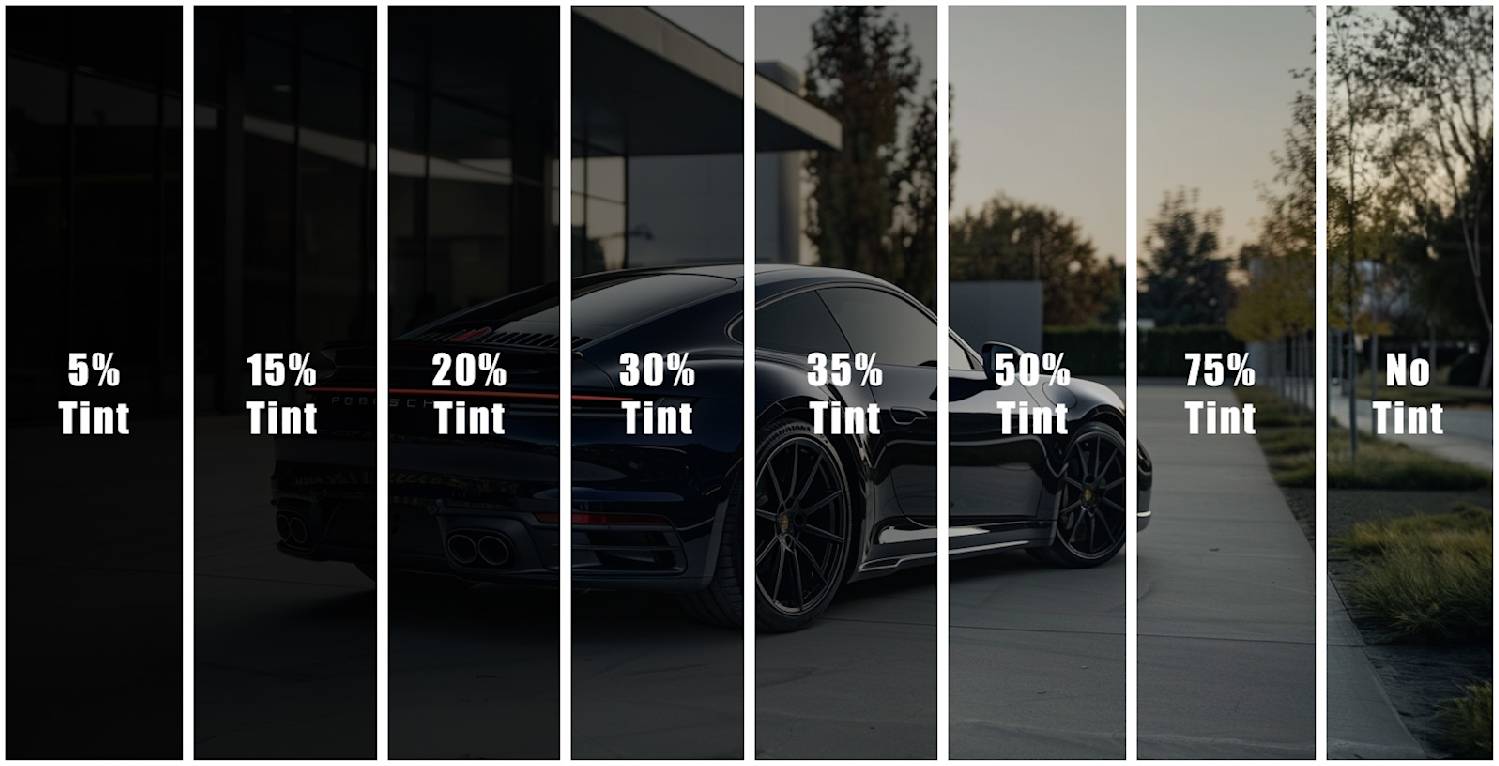Professional Window Tinting Services for Better Comfort and Style in Your Vehicle
Professional Window Tinting Services for Better Comfort and Style in Your Vehicle
Blog Article
Window Tinting Regulations: What You Required to Know Prior To Tinting Your Car
Recognizing window tinting regulations is vital for any vehicle proprietor considering tinting their cars and truck. Regulations vary dramatically from state to state, establishing certain limitations for Visible Light Transmission (VLT) percentages, particularly for front-side windows and windshields. Failure to adhere to these legislations can lead to fines, the necessity to eliminate the tint, and complications with insurance policy. As you consider improving your car's appearance and performance, it is important to grasp not only the lawful ramifications yet also the useful factors to consider that feature choosing the best tint. What variables should you focus on in your decision-making process?
Value of Comprehending Color Laws
Comprehending window tinting laws is essential for automobile proprietors to ensure compliance with state regulations. These regulations determine the acceptable degrees of tint darkness and reflectivity, which can significantly differ from one jurisdiction to one more. Stopping working to abide by these guidelines can result in fines, obligatory removal of the tint, and possible issues throughout car inspections.
Additionally, comprehending these legislations assists automobile owners make informed choices regarding their tinting options. Various types of window movies give various advantages, such as UV security, heat rejection, and glow reduction. Without expertise of the lawful limits, automobile owners run the risk of picking items that might inevitably lead to lawful concerns.
In addition, recognition of tinting laws fosters a much safer driving setting. window tinting. Exceedingly dark colors can harm visibility, raising the danger of accidents, specifically in the evening or in negative climate condition. Regulation enforcement firms also make use of these regulations to make sure roadway security, making compliance not simply a personal responsibility but a lawful commitment
State-Specific Tint Laws
Each state in the U.S. has developed its very own details regulations concerning window tinting, showing a diverse selection of demands and standards. These regulations can differ substantially, affecting how vehicle owners approach installation and conformity. For example, some states allow darker colors on rear windows while enforcing stringent limits on front-side home windows.
Additionally, policies commonly specify allowable color products and shades. Certain states ban reflective tints altogether, while others may permit them to a limited degree. Some territories mandate that lorries with tinted windows display a sticker label showing conformity with state legislations, supplying a clear identification for law enforcement.
Enforcement of these legislations likewise differs; some states are a lot more aggressive, carrying out random checks, while others count on grievances or noticeable infractions to start enforcement. Vehicle owners should understand that failing to abide by state-specific tint regulations can result in penalties, mandatory elimination of illegal tints, or both.

Lawful Tint Percentages
Figuring out the legal color percents is important go right here for vehicle owners seeking to conform with state regulations. Each state has particular laws regulating just how much light should travel through the windows of a vehicle, which is revealed as a portion understood as Noticeable Light Transmission (VLT) This percent varies significantly across states and can depend on the kind of home window-- front side, back side, and windshield.
As an example, some states allow just 20% VLT on front side windows, while others may allow up to 50%. Windscreen tinting is frequently a lot more limited, with several jurisdictions enabling only a narrow band of tint on top of the windscreen. On the other hand, rear windows normally have a lot more lenient laws, with some states permitting browse around this site darker tints.
It is essential for lorry proprietors to familiarize themselves with their regional regulations to stay clear of potential lawful concerns. This includes understanding how VLT is gauged, as it can vary based on the type of window film made use of. Staying informed regarding these policies makes sure compliance and advertises risk-free driving conditions for both the vehicle owner and others when traveling.
Consequences of Non-Compliance
Stopping working to stick to window tinting regulations can lead to significant effects for automobile owners. Police officers educated to recognize unlawful color degrees may issue penalties, which can vary by jurisdiction but commonly vary from moderate to substantial amounts.

Insurer may additionally impose charges for non-compliance, as unlawful adjustments can be seen as a violation of policy terms. This might impact coverage rates or result in issues in insurance claims if a case occurs.
Inevitably, the effects of non-compliance extend beyond prompt punitive damages; they can impact a chauffeur's insurance coverage rates, legal standing, and total vehicle worth, emphasizing the relevance of adhering to local home window tinting laws.
Tips for Picking Tinting Options
When picking home window tinting alternatives,Recognizing the effects of non-compliance highlights the relevance of making informed selections. Firstly, acquaint yourself with your state's particular regulations regarding color darkness and reflectivity. Each state has distinct regulations that determine the allowable limitations, Visit This Link so guarantee you stay within these guidelines to stay clear of charges.
Secondly, consider the kind of color material. Alternatives consist of colored, metalized, and ceramic colors, each offering differing degrees of warm rejection, UV security, and longevity. Ceramic tints supply premium warmth resistance without interfering with electronic tools, making them a prominent selection.
In addition, analyze your key function for tinting. If you seek improved privacy, go with darker tints; however, bear in mind that this might impact visibility at evening. On the other hand, if glare decrease and UV security are your major issues, lighter colors may be enough.
Finally, seek advice from with a specialist installer who is educated about neighborhood laws and can recommend top quality materials suited to your requirements (window tinting). Taking these variables into account will certainly guarantee you make a knowledgeable decision, eventually improving both your lorry's appearances and capability
Final Thought
In conclusion, experience with window tinting laws is crucial prior to using tint to a car. By comprehending legal demands and choosing suitable color products, automobile owners can achieve visual improvement while continuing to be certified with relevant laws.
Recognizing home window tinting laws is vital for any car proprietor considering tinting their automobile.Comprehending window tinting legislations is crucial for automobile proprietors to ensure compliance with state guidelines. Some states permit darker tints on back home windows while enforcing stringent restrictions on front-side home windows.
In contrast, back windows generally have extra tolerant policies, with some states allowing darker tints. (window tinting)
In final thought, knowledge with window tinting legislations is necessary prior to using tint to a car.
Report this page